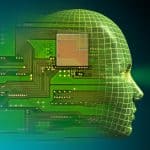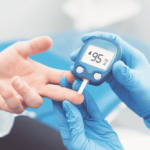Due to the rising number of patients, hospital equipment has become a key requirement in the hospital setting. The right type of equipment will not only help hospitals provide proper care but will also be able to enhance the productivity of the hospital staff as well. Moreover, it can help improve the overall safety of patients through routine tests for hospital equipment, such as testing compressed air. Hence, it’s very important for hospitals to purchase all sorts of equipment which are necessary for their day-to-day operations.
We compiled a rundown of the most significant and incomprehensible medical equipment that every medical clinic needs to provide to their patients for the best services. You can also know more about these types of equipment from Intermountain Medical Imaging.
Hospital Stretchers
What’s a hospital without stretchers? These are needed to transport patients from one complex of the hospital to another, particularly those that are strapped to machines or have serious injuries.
ECG Machines
The ECG machine is extremely important because it is useful to assess the heart rate of patients. ECG machines let the doctors know all about fast heart rate as well as an oddly slow heartbeat rate. It also shows all about the blood pressure and also detects if the patient previously had a heart attack. The best part of this machine is that it gives immediate and prompt results so the doctors can operate as quickly as possible without any delay.
Defibrillators
Defibrillators work to restore the heart’s normal rhythm. These are absolutely life-saving during threatening emergencies such as cardiac arrests, tachycardia, and cardiac arrhythmias.
Sphygmomanometer
A hospital needs to have a decent, solid and precise sphygmomanometer. It is one of the most basic machines a hospital should always have. A sphygmomanometer is used to check blood pressure. Blood pressure is additionally performed to screen the viability of drugs and different techniques to control hypertension, and as a diagnostic to identify different sicknesses and abnormalities.
Anesthesia Machines
In the modern hospital setting, this would include all the added tools needed to make it more efficient, such as a suction unit, patient-monitoring devices, and a ventilator. These are highly needed to supply a continuous and accurate flow of medical gases, such that the level of anesthesia administered to a patient is maintained.
Sedation Machines
Anaesthesia machines are intended to give a precise and ceaseless amount of clinical gases to keep up an appropriate amount of sedation to a patient. Modern sedation machines incorporate apparatuses, for example, a ventilator, suction unit, and patient-monitoring gadgets. This machine is extremely essential as it helps the doctors to give patients anaesthesia. Surgeries and other operations cannot be done without using this machine first.
Durable Medical Equipment
These kinds of medical equipment are used by hospitals to give therapeutic aid and comfort to patients. However, these should be prescribed by a physician to ensure proper use. In most cases, these are also used for long-term hospital and home care.
These would include the following:
- Wheelchairs;
- Oxygen tanks;
- Hospital beds;
- Kidney machines;
- Mobility assistive equipment.
Sterilizers
In a hospital, one of the main concerns is to keep it clean and disinfected. Sterilizers help keep the instruments from catching germs. If a patient gets sick due to the negligence of the hospital, for example, not sterilizing the pieces of equipment before use, this can cause death as well. The sickness of the patient will result in a lawsuit and shutting down of the hospital as well.
Blanket And Fluid Warmers
When a patient undergoes surgery, their body temperature should be maintained. Otherwise, this could lead to dangerous complications, such as hypothermia, increased risk of developing an infection, and a long hospital stay.
This is where the need for blanket and fluid warmers come in, used for patients in the Operating Room.
Ultrasound And X-ray Machines
Ultrasound and X-ray machines help the doctors to see inside the body of a patient. They are the most important machines that should always be present in a hospital or even a small clinic. Ultrasound is not only cost-effective, but it is also very useful. It reduces radiation and helps diagnose and detect various diseases. The sound waves in ultrasound machines help find where the pain is and the causes of swelling and infection. It also helps to detect pregnancy and find the organs of an unborn baby.
LCD Monitor
LCD monitors help keep track of the vitals of the patients. Every hospital needs a large number of LCD monitors as they provide accurate findings.
Final Word
The above-mentioned list consists of only a few important machines that should be present in a hospital and even small clinics. There are a lot more machines and the latest technologies that should be there in a hospital, however, small clinics are unable to afford most of the latest machinery which is why we have only mentioned the basics and essential ones that are used in day to day check-ups.
The Editorial Team at Healthcare Business Today is made up of skilled healthcare writers and experts, led by our managing editor, Daniel Casciato, who has over 25 years of experience in healthcare writing. Since 1998, we have produced compelling and informative content for numerous publications, establishing ourselves as a trusted resource for health and wellness information. We offer readers access to fresh health, medicine, science, and technology developments and the latest in patient news, emphasizing how these developments affect our lives.







